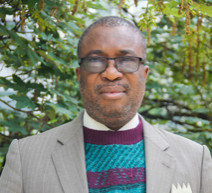Seydou Moussa Traore
tells us about the partnership between INED and Mali’s INSTAT

Seydou Moussa Traore is a demographic statistician and director of Mali’s Institut National de la Statistique (INSTAT) (interview from March 2013).
What are the relations between INED and INSTAT?
INED has long had privileged relations with INSTAT in the framework of Mali’s SLAM-Suivi Longitudinal Project, undertaken 25 years ago under the direction of Véronique Hertrich. The project analyses demographic change and family dynamics in rural Sahelian contexts. This partnership was confirmed and reinforced by the signing in 2012 of a framework agreement to promote collaboration in research, training and scientific development.
hat are your priority activities for 2013?
Mali conducted its fourth general population and housing census in 2009. Statistical analysis is well under way and we want to enhance the scientific utility of the database, notably through collaboration with INED colleagues. This year’s priority is to produce regional atlases. From 18 March to 18 April 2013, INED will be hosting four of our statisticians for a month of training and data processing under the guidance of the Pôle Suds Statistical Methods Service (SMS). INSTAT will provide the database and maps, and the SMS will train our statisticians in mapmaking and provide analytical support. This partnership will increase INSTAT’s ability to produce and analyse theme-based maps. The plan is to complete the nine regional atlases by the end of 2013, with support from INED for the first four. The atlases, made up of easily interpreted images and therefore accessible to a wide range of users, will then be put on the INSTAT website.
In 2014, we are hoping to extend the scope of the project; i.e., to draw up a national atlas and develop comparative regional studies.
Are there other research projects that you would like to develop with French-speaking demographers?
The 2009 census is an opportunity to construct shared scientific activities around a rich corpus of data. This year’s collective activities will also help us lay the groundwork for individual collaborations around our census data in connection with particular research questions (e.g., schooling, the use of civil status records, family structures), methodology (data quality and indirect methods) and the challenges of archiving the data and making it available. We also have a partnership with the Observatoire Démographique and Statistique de l’Espace Francophone (ODSEF) in Quebec around how to preserve our census questionnaires, one with Integrated Public Use Microdata Series (IPUMS)-International on making census microdata available, and one with the Institut de Recherche pour le Développement (IRD) on matters of census and survey data analysis.
We are also interested in participating in more closely targeted research studies, research into particular fields that uses experimental methodologies, because doing so will help us develop a constructive, critical perspective on our data and protocols. The Slam-Suivi longitudinal project in Mali offers stimulating possibilities for measuring the quality of respondent statements and estimations, on age for example, family member survival or birth registration. One concrete result of our contacts is a joint INED-INSTAT paper that will be delivered at the next IUSSP (International Union for the Scientific Study of Population) conference.
Having our team present in Paris will give us an opportunity to meet with several colleagues from France and neighbouring countries and thereby to further develop our contacts and scientific exchanges. By hosting an INSTAT delegation, INED is playing a significant role in a networking and assembly dynamic that far exceeds the scope of the INSTAT-INED bilateral framework.
